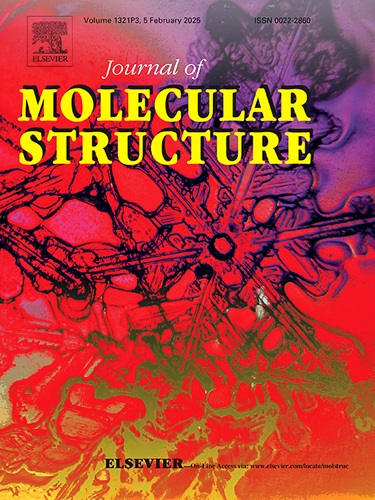NaLaCaWO6 double perovskite: Structure analysis, efficient Bi3+ to Eu3+ energy transfer and favourable visual optical thermometry
IF 4
2区 化学
Q2 CHEMISTRY, PHYSICAL
引用次数: 0
Abstract
Herein, we report a series of NaLaCaWO6: Bi3+, Eu3+ double perovskite phosphors with a monoclinic crystal structure, achieving high-precision optical thermometry. Comprehensive characterisations, including X-ray diffraction, Raman spectroscopy, X-ray photoelectron spectroscopy, scanning electron microscopy and thermoluminescence, revealed detailed material properties. The electronic structure and formation energies of NaLaCaWO6: Bi3+, Eu3+ were calculated using density functional theory (DFT), and the influence of luminescent centers (Bi3+ and Eu3+) on the optical properties was analyzed. The emission colour was tuned from green to red with increasing Eu3+, and efficient Bi3+ → Eu3+ energy transfer was achieved through dipole–dipole interaction, with an energy transfer efficiency of 59.4 %. In addition, the distinct temperature response characteristics of Bi3+ and Eu3+ fulfilled the prerequisites for efficient temperature signal resolution, demonstrating a high relative sensor sensitivity of 0.74 % K−1 (at 298 K) and minimal temperature resolution (δT = 0.14 K) for the NaLaCaWO6: 0.05Bi3+, 0.01Eu3+. The moisture resistance of the phosphor was confirmed through a water immersion test, demonstrating excellent moisture resistance. These findings not only elucidate the photoluminescence behaviour of Bi3+ and Eu3+ in NaLaCaWO6 but also highlights its promising application prospects in optical thermometry.
求助全文
约1分钟内获得全文
求助全文
来源期刊

Journal of Molecular Structure
化学-物理化学
CiteScore
7.10
自引率
15.80%
发文量
2384
审稿时长
45 days
期刊介绍:
The Journal of Molecular Structure is dedicated to the publication of full-length articles and review papers, providing important new structural information on all types of chemical species including:
• Stable and unstable molecules in all types of environments (vapour, molecular beam, liquid, solution, liquid crystal, solid state, matrix-isolated, surface-absorbed etc.)
• Chemical intermediates
• Molecules in excited states
• Biological molecules
• Polymers.
The methods used may include any combination of spectroscopic and non-spectroscopic techniques, for example:
• Infrared spectroscopy (mid, far, near)
• Raman spectroscopy and non-linear Raman methods (CARS, etc.)
• Electronic absorption spectroscopy
• Optical rotatory dispersion and circular dichroism
• Fluorescence and phosphorescence techniques
• Electron spectroscopies (PES, XPS), EXAFS, etc.
• Microwave spectroscopy
• Electron diffraction
• NMR and ESR spectroscopies
• Mössbauer spectroscopy
• X-ray crystallography
• Charge Density Analyses
• Computational Studies (supplementing experimental methods)
We encourage publications combining theoretical and experimental approaches. The structural insights gained by the studies should be correlated with the properties, activity and/ or reactivity of the molecule under investigation and the relevance of this molecule and its implications should be discussed.
 求助内容:
求助内容: 应助结果提醒方式:
应助结果提醒方式:


